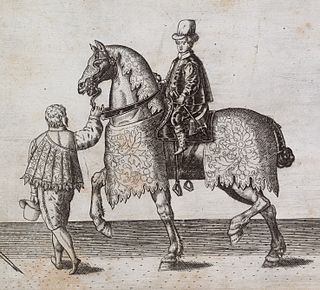Related Research Articles

Denis Gaultier was a French lutenist and composer. He was a cousin of Ennemond Gaultier.

Francesco Canova da Milano was an Italian lutenist and composer. He was born in Monza, near Milan, and worked for the papal court for almost all of his career. Francesco was heralded throughout Europe as the foremost lute composer of his time. More of his music is preserved than of any other lutenist of the period, and his work continued to influence composers for more than a century after his death.

Vincenzo Galilei was an Italian lutenist, composer, and music theorist. His children included the astronomer and physicist Galileo Galilei and the lute virtuoso and composer Michelagnolo Galilei. Vincenzo was a figure in the musical life of the late Renaissance and contributed significantly to the musical revolution that demarcates the beginning of the Baroque era.

Bálint Bakfark was a Hungarian composer of Transylvanian Saxon origin, and lutenist of the Renaissance. He was enormously influential as a lutenist in his time, and renowned as a virtuoso on the instrument.

Jean-Henri d'Anglebert was a French composer, harpsichordist and organist. He was one of the foremost keyboard composers of his day.
Jakub Polak, also known as Jakub Reys and Jacques le Polonois, was a Polish lutenist and composer. He was notable for his service as court lutenist to Henry III of Poland and France. Initially Polak served as one of the court musicians at Kraków, and after Henry III fled Poland, Polak joined him in Paris in 1574. He was an author of several lute compositions, most notably preludies, fantasies, dances and several chansons. During his lifetime he was renowned for his lute improvisations.

Alessandro Piccinini was an Italian lutenist and composer.
Jan Antonín Losy, Count of Losinthal ; also known as Comte d'Logy, was a Bohemian aristocrat, Baroque lute player and composer from Prague. His lute works combine the French style brisé with a more Italian cantabile style. He was probably the most significant lutenist-composer in Bohemia at the height of the lute's popularity there.
Francis Pilkington was an English classical composer, lutenist and singer, of the Renaissance and Baroque period. Pilkington received a B.Mus. degree from Oxford in 1595. In 1602 he became a singing man at Chester Cathedral and spent the rest of his life serving the cathedral. He became a minor canon in 1612, took holy orders in 1614 and was named precentor of the cathedral in 1623. Although he was a churchman, Pilkington composed largely secular music—ayres, madrigals, and lute songs. These include two sets of madrigals and a collection of lute ayres (1605). He died in Chester.
Emmanuel Adriaenssen was a Flemish lutenist, composer and master of music. He authored the influential Pratum Musicum, which contains scores for lute solos, and more importantly settings of madrigals for multiple lutes and different ensembles involving lutes and voices. He also had an important influence on the next generation of lutenists through his activity as a teacher of music in his own music school.
Albert de Rippe was an Italian lutenist and composer. He was born in Mantua and worked there before 1528, when he left for France. There, he joined the court of Francis I in 1529. De Rippe was evidently held in great esteem at the court, as his annual salary was double that of any other lutenist, and he also frequently received gifts of land, money, wine, etc., and various other benefits. Francis I granted Rippe a letter of naturalization, guaranteeing his descendants an inheritance. At Rippe's death, Pierre de Ronsard wrote a aulogy that claimed Rippe's lute continued to create music from his tomb.
Julien (Jean) Perrichon was a French composer and lutenist of the late Renaissance. He was a lute player for Henry IV of France and famous enough to be mentioned by Marin Mersenne in Harmonie universelle (1636) as one of the finest musicians of the preceding age.

Daniel Bacheler, also variously spelt Bachiler, Batchiler or Batchelar, was an English lutenist and composer. Of all the English lutenist-composers, he is now credited as probably being the most successful in his own lifetime.

Hans Neusidler, was a German composer and lutenist of the Renaissance.
Robert Dowland was an English lutenist and composer. He was the son of the lutenist and composer John Dowland, who wrote almost 90 lute songs and other pieces written for the lute. Robert Dowland wrote only a few known compositions, including several in Varietie of Lute Lessons.
Ennemond Gaultier (c. 1575 – 17 December 1651) was a French lutenist and composer. He was one of the masters of the 17th century French lute school.

Charles Mouton was a French lutenist and composer.
François Dufault was a French lutenist and composer.

Jacques Gaultier was a French Baroque lutenist and composer. He was not related to the composers and lutenists Denis Gaultier and Ennemond Gaultier.
Charles Fleury, Sieur de Blancrocher was a French lutenist. Known principally under the name Blancrocher, he was one of the leading performers of his day, active in Paris. Whether he composed or not is unknown; a single dance movement survives, attributed to him, in the so-called Manuscrit Vaudry de Saizenay. His name became well known in the late 20th century, for after his sudden death as many as four major composers wrote tombeaux in his memory: lutenists Denis Gaultier and François Dufaut, and harpsichordists Louis Couperin and Johann Jakob Froberger. The latter witnessed Blancrocher's death, and the lutenist apparently died in Froberger's arms.
References
- ↑ Chauvel, Claude (2001). "Rene Mesangeau". In Sadie, Stanley; Tyrrell, John (eds.). The New Grove Dictionary of Music and Musicians (2nd ed.). London: Macmillan Publishers. ISBN 978-1-56159-239-5.